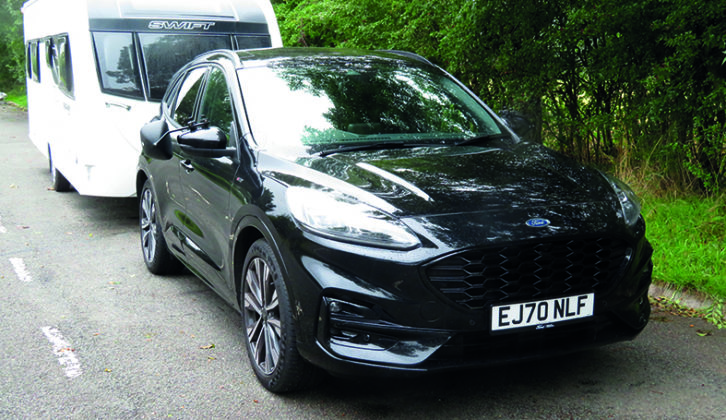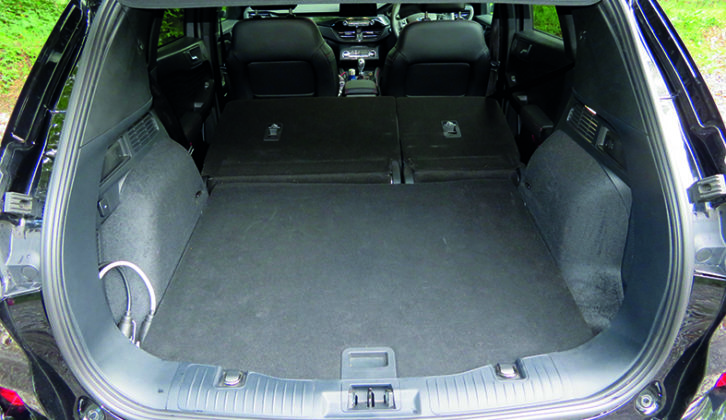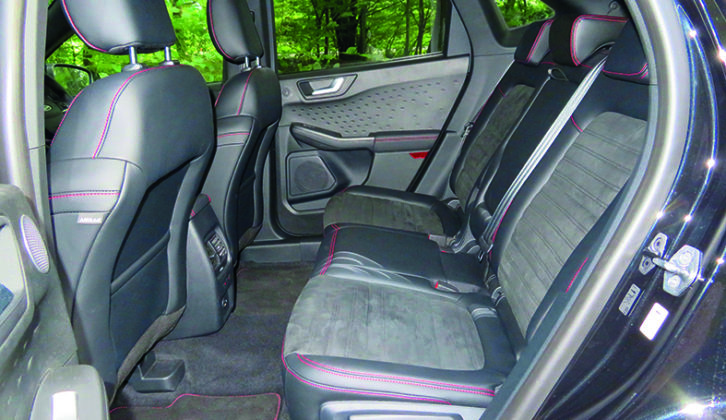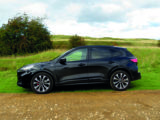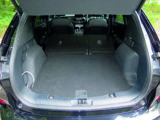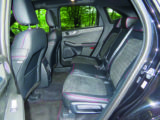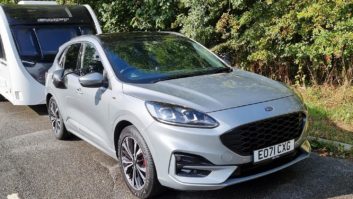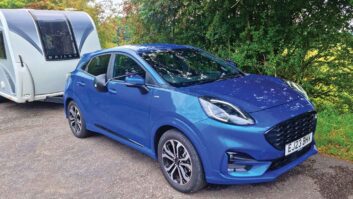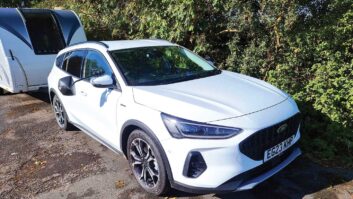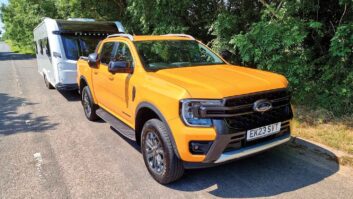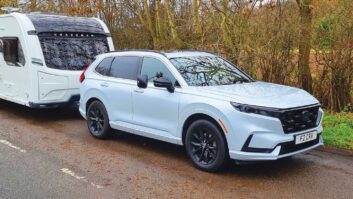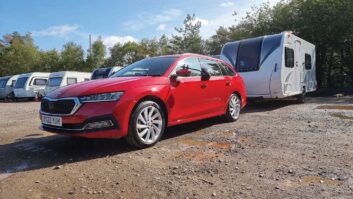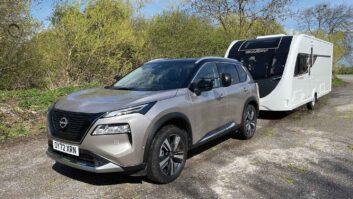The current Ford Kuga has been around for a couple of years or so, and we’ve already tested the plug-in hub rid. However, that car has a very low towing limit, so we’ve been keen to try one of the diesels.
The 2.0 EcoBlue mild hybrid promises to stretch a gallon for over 50 miles in normal driving and provides a 1900kg towing limit, 700kg higher than the plug-in hybrid’s.
We reckoned there was untapped tow car potential in the plug-in model. Does the mild-hybrid fulfil the Kuga’s promise?
Towing ability
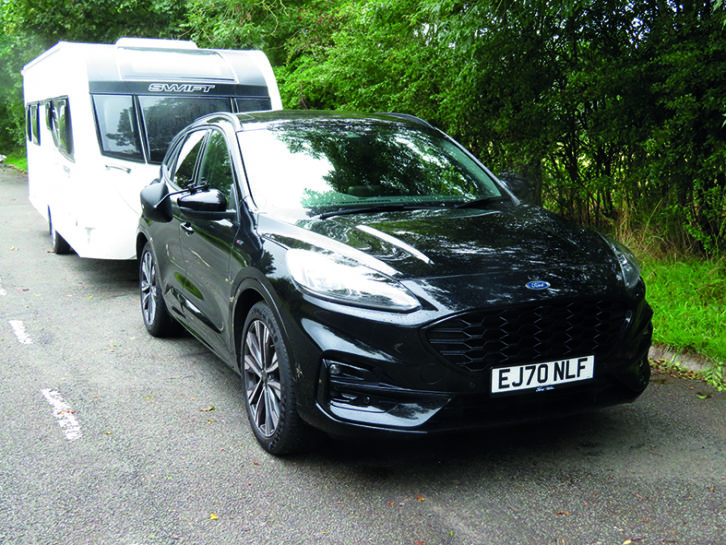
Ford covers almost every base with the Kuga range, with just about every type of powertrain short of pure electric.
The mild-hybrid front-wheel-drive diesel is lighter and less powerful than the diesel 4×4, but it looks like a sensible compromise for someone keen to balance day-to-day running costs and towing ability.
It weighs a healthy 1680kg. That’s 55kg less than the 4×4 model, but still gives a respectable 85% match figure of 1428kg.
We matched the Ford to a Swift Fairway 580 with a MiRO of 1306kg, borrowed from Broad Lane Leisure. With 273lb ft of torque, there’s plenty of mid-range pulling power to tow the Swift up to speed. The Ford accelerated briskly when pulling away from junctions, and easily reached 60mph by the end of motorway slip roads.
Our ST-Line X test car comes with sports suspension as standard. The set-up is firm, but helps keep the caravan under control on country roads, with little sign of the van pushing or shoving at the back of the car.
On A-roads and motorways, the Kuga continues to make an accomplished tow car, although the caravan did move around a bit in crosswinds. In fairness, it was a breezy day, and the movements were rarely large enough to need any steering correction.
Damp weather underlined the downside of choosing a front-wheel-drive SUV for the sake of fuel economy. When pulling away on a 1-in-10 slope, the front wheels spun briefly unless we were careful with the throttle.
You might have similar trouble pulling away on a grassy pitch, but on hardstanding, the Kuga should be easy to manoeuvre. The clutch is light and the throttle response is smooth, and the rear-view camera helps.The 13-pin socket folds down from below the back bumper. It’s quite a long way under the vehicle, but not so far as to be awkward. However, we prefer having the electrics integrated within the towbar – this makes the socket easier to reach.
Solo driving
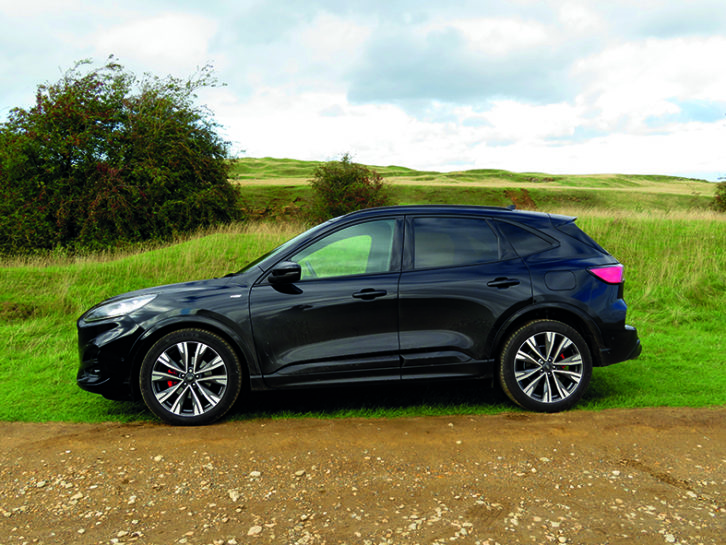
With a couple of reservations, we enjoyed driving the Kuga. The bad points are a gruff engine note when accelerating, and an excess of road noise. Once cruising at a steady speed, the engine quietens, but the rumble from the tyres never goes.
The sports suspension delivers nimble handling, and precise steering helps the driver make the most of it. The Kuga takes twisting B-roads in its stride.
Relatively firm suspension means you feel lumps and bumps in the road, though. If you value comfort over agility, the Škoda Karoq may be more appealing.
Without the weight of a caravan holding it back, the Ford accelerates quickly. You notice the mild-hybrid tech at work when the engine cuts out to save fuel – the 48V starter-generator restarts the engine quickly and smoothly when needed.
Practicality
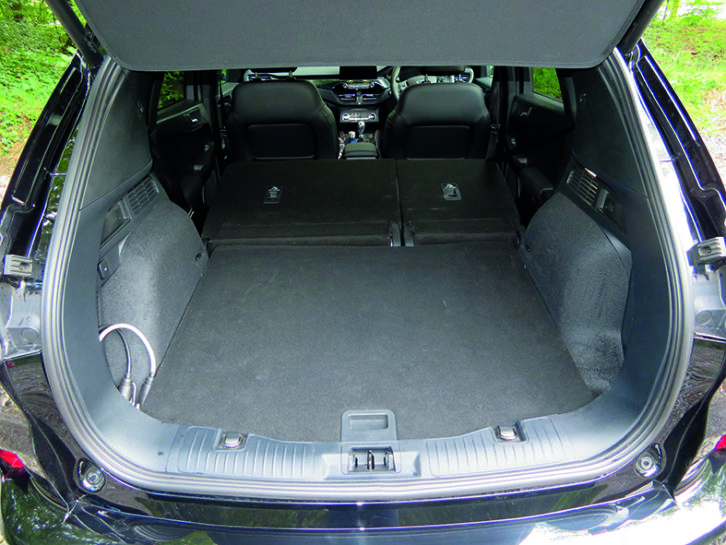
You sit high up in the Kuga, with enough adjustment for the seat and wheel to suit drivers of most builds. The controls are logically laid out, and we’re always pleased to see the air-con controls kept separate from the touchscreen.
However, the finish is disappointing for a car with a price tag of well over £30,000. The plastics on the lower half of the doors and dash are hard and cheap-looking.
There is plenty of space for passengers, though, with lots of head- and legroom in the back of the car. Adults can travel in comfort, and air vents between the front seats will help to keep everyone cool.
Boot space isn’t so generous. The capacity of 412 litres lags behind that of most rivals, although it can be extended by sliding the rear bench forward. Use all the travel and the space rises to 526 litres, although that won’t leave a lot of room for passengers.
Levers either side of the tailgate fold the seat backs with a 60/40 split. There’s a light slope to the floor with the seats down, and 1534 litres of space if you load to the roof.
Buying and owning
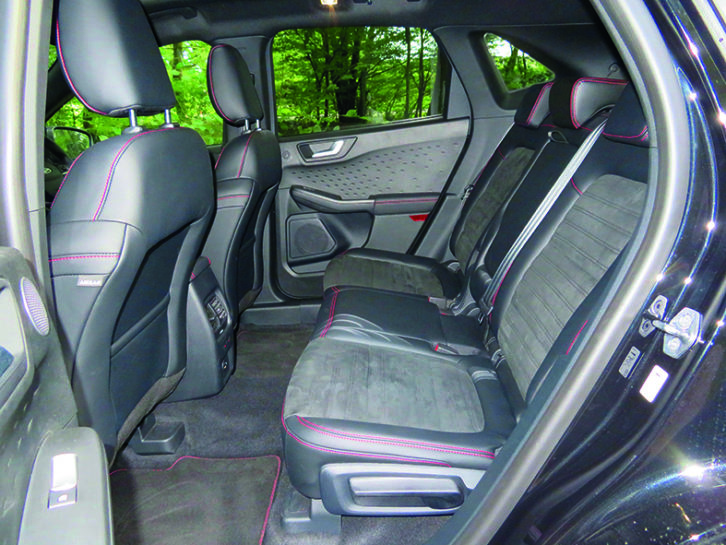
Costing £33,505, the Kuga 2.0 EcoBlue ST-Line X is competitively priced and well equipped. Heated seats and steering wheel, a panoramic sunroof, 19-inch alloys. artificial leather seats and climate control all come as standard.
Safety kit is also comprehensive, and the Kuga scored the maximum five stars when tested by Euro NCAP’s experts.
The official combined economy figures of 55.3-57.6mpg are broadly achievable if you drive with restraint, and the 31.6mpg we saw while towing the Swift is excellent.
Like other Fords, the Kuga comes with a three-year, 60,000 mile warranty. Several rivals offer longer; the Kia Sportage has a seven-year/100,00-mile warranty package.
Verdict
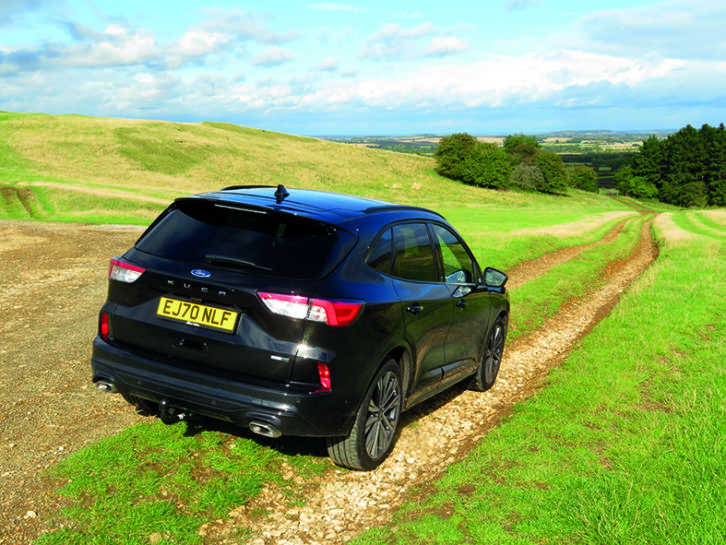
For caravanners, the mild-hybrid diesel is a big improvement over the plug-in hybrid. It can legally tow a mid-sized caravan, which the plug-in can’t. It’s also extremely fuel-efficient, solo and towing. Improved Improved interior quality and a bigger boot would make this capable tow car even better.
If you liked this… READ THESE:
Ford Kuga 2.5 Duratec PHEV ST-Line X
10 best cars for towing caravans: new models
How to choose the perfect tow car
If you’ve enjoyed reading this article, why not get the latest news, reviews and features delivered direct to your door or inbox every month. Take advantage of our brilliant Practical Caravan magazine SUBSCRIBERS’ OFFER and SIGN UP TO OUR NEWSLETTER for regular weekly updates on all things caravan related.
The sports suspension delivers nimble handling, and precise steering helps the driver make the most of it. The Kuga takes twisting B-roads in its stride
Technical Specifications
| Engine Size | 1997 cc |
| Kerbweight | 1680 kg |
| 85% KW | 1428 kg |
| Towball Limit | 100 kg |
| Maximum Towing Limit | 1900 kg |
| Power | 150 bhp |
| Torque | 273 lb ft |
| Offical MPG | 55.3 mpg |
| Towing MPG | 31.6 mpg |
| CO₂ | 135 g/km |
